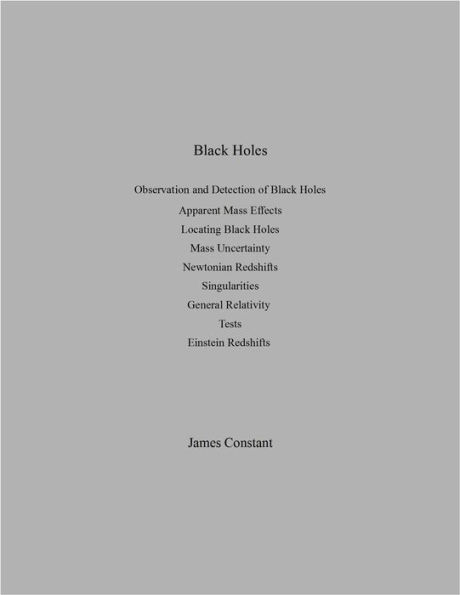Black holes are theoretically hypothesized astronomical objects in all theories of gravitation. By definition, black holes emit no photons and, therefore, all information about black holes is being sought indirectly, by formulating theories and seeking observations. The likelihood of observing and detecting black holes is at nearest distances, likely inside and nearest the centers of galaxies, where the unbinding effects of apparent mass and relativistic speeds are lowest. Measurements of a black hole’s mass and radius are speculative, and the detection of black holes remains speculative. One must find Keplerian orbits about centers with no apparent sources.
Redshift observations provide information about an object’s mass M and radius a, and theories analyze the information. The term μ=GM/c2, called the mass radius, appears in all theories and its ratio to distance r from the center of mass μ/r, are important objects of interest to theorists and astro-physicists.The main guides to understanding observed redshifts are based on Newtonian and Einstein’s theories. Newton’s laws of motion and gravitation, and Brillouin’s apparent mass theory, find the indirect observation and detection of black holes indeterminate and leave open the question of their existence or nature. Unlike Newton’s Theory of Gravitation, being supported by observations, Einstein’s General Theory, being complex and unconfirmed by tests as to its validity, is purely speculative about the nature of black holes. I conclude that, compared with Einstein’s General Theory, Newtonian theory is a better guide in astronomy
Black holes are theoretically hypothesized astronomical objects in all theories of gravitation. By definition, black holes emit no photons and, therefore, all information about black holes is being sought indirectly, by formulating theories and seeking observations. The likelihood of observing and detecting black holes is at nearest distances, likely inside and nearest the centers of galaxies, where the unbinding effects of apparent mass and relativistic speeds are lowest. Measurements of a black hole’s mass and radius are speculative, and the detection of black holes remains speculative. One must find Keplerian orbits about centers with no apparent sources.
Redshift observations provide information about an object’s mass M and radius a, and theories analyze the information. The term μ=GM/c2, called the mass radius, appears in all theories and its ratio to distance r from the center of mass μ/r, are important objects of interest to theorists and astro-physicists.The main guides to understanding observed redshifts are based on Newtonian and Einstein’s theories. Newton’s laws of motion and gravitation, and Brillouin’s apparent mass theory, find the indirect observation and detection of black holes indeterminate and leave open the question of their existence or nature. Unlike Newton’s Theory of Gravitation, being supported by observations, Einstein’s General Theory, being complex and unconfirmed by tests as to its validity, is purely speculative about the nature of black holes. I conclude that, compared with Einstein’s General Theory, Newtonian theory is a better guide in astronomy

Black Holes

Black Holes

Product Details
| BN ID: | 2940151860703 |
|---|---|
| Publisher: | James Constant |
| Publication date: | 03/28/2015 |
| Series: | Gravitation , #18 |
| Sold by: | Smashwords |
| Format: | eBook |
| File size: | 51 KB |
